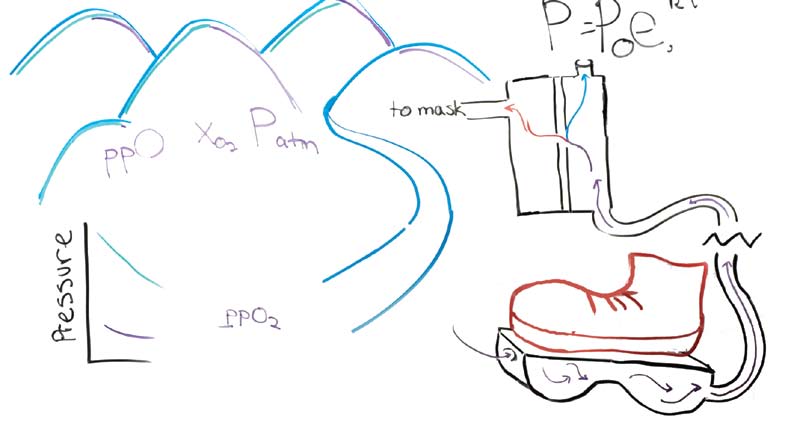

On paper it looks like someone tried to cross the Reebok Pump athletic shoe with one of those oxygen masks that drops from overhead when your plane is going down. But as senior chemical and biomolecular engineering major Anne Gatchell is quick to point out, looks can be deceiving.

“It is often the inventor who comes up with an idea and convinces people there is a need,” she says with true entrepreneurial brio. Gatchell and fellow chemical and biomolecular engineering majors Manuel Balvin, Dave Filipiak, and Shyam Khatau believe they have identified a need currently unmet: how to ameliorate the effects of acute mountain sickness among the estimated 100 million travelers who visit high-altitude mountainous regions across the globe every year.
The Altitude Alright Supplemental Oxygen System uses a commercially available gas separation membrane to increase the amount of oxygen inhaled by at least 25 percent.

Gatchell, who is from mile-high Denver, and Balvin, a native Peruvian, were familiar with the headaches, dizziness, nausea, lethargy, and other symptoms that unacclimated visitors to their mountainous countrysides can sometimes experience. At high altitudes—defined as elevations of 5,000 feet or more above sea level— lower atmospheric pressure means less oxygen is available in every breath, and hemoglobin in the blood becomes less efficient at delivering oxygen to muscles and tissues. Lower atmospheric pressure can also cause blood vessels to extend, releasing fluid into surrounding tissues. A sudden change, as for instance when a coastal visitor flies into a high altitude city, can cause feelings of physical exhaustion, pain and discomfort, gastro-intestinal difficulties, and in extreme cases, pulmonary and cerebral edemas.
Currently, the vast majority of people who experience difficulties at high altitudes must simply suffer through until their bodies adapt to the change in pressure. But studies have shown that by increasing the percentage of oxygen in each breath, the effective change in elevation can be reduced to a range in which there are few, if any, side effects.

Combining creative thinking with a little chemical and biomolecular engineering knowhow, Gatchell and her classmates devised the Altitude Alright Supplemental Oxygen System, which uses a commercially available gas separation membrane to increase the amount of oxygen inhaled by at least 25 percent. Pumps attached to the user’s feet drive air through the membrane stored in a small backpack. Oxygen-enriched air then travels by flexible tubing to a plastic mask worn over the mouth and nose. “The system would be lightweight, portable, and would cost less than $100 per unit to produce,” Gatchell says. “We see a ready market for high altitude resort owners, or tour groups visiting elevations between 8,000 to 18,000 feet above sea level.”




